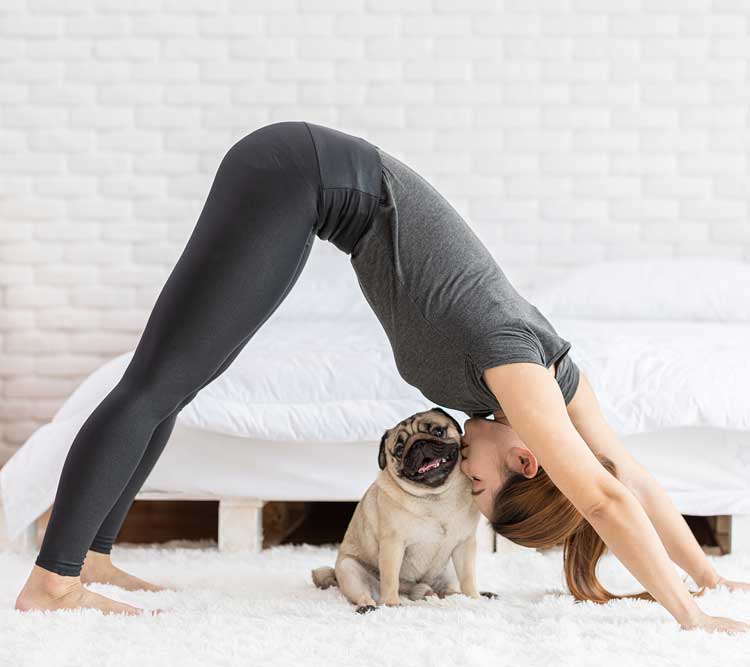Ref: Oxford Dictionary

Movement, a simple word that has all sorts of definitions but the main premise of all of them seems to be change. Changing your body posture regularly to optimise health and improve productivity. We know through many decades of research that movement is a key component of a healthy lifestyle. That much is evident but how does this relate to how we move and when we move as we work with devices and at our computer workstations.
This is where a lot of issues lie and due to the constant development of technology some of us seem to be getting more and more static. In fact, according to James Levine’s research we have gone from a state of burning up to 2000 calories a day at work to a mere 200 calories a day.
We are more static than ever in our workplaces and now that many of us have transitioned to a temporary home working situation this becomes an even bigger issue. We are in such close proximity now to everything. The bathroom is a couple of steps away, so is the kitchen and if you are lucky enough to have a balcony or a garden well it’s probably just a hop, skip and a jump away. This means that we have very quickly reduced the number of steps we are taking throughout the day. We no longer have the opportunity to walk to a colleague’s desk on the other side of the office, move to a meeting room for collaboration or grab documents from the centralised printing space. We are confined to a much smaller space and without a serious shift in mindset you may be at risk of more than just a bad back.
When we sit for too long in a static posture, it not only affects our spine and our back, but it also affects our general health. Joan Vernikos, a former life scientist conducted some research where she explores how sedentary lifestyles affect our health and happiness.
Ref: Joan Vernikos

Reduced movement whilst working at your computer or device can affect you in many ways and some of the symptoms include; immune system suppression, lost balance and coordination, reduced blood circulation so fatiguing quicker and a loss of muscle mass.
Vernikos’s research suggests that we should be moving 32 times per day so getting in and out of your seated position at least 32 times per day. If you consider an 8-hour shift for example that’s 4 times an hour. Now we’re not expecting you take a 15-minute break each time you stand up, but a movement break of 30-60 seconds can be effective if done regularly.
No matter how good your work setup is, if you don’t move regularly every hour, there is a strong chance you will start to suffer from pain or discomfort which could then lead to a musculoskeletal disorder (MSD). When you get to the point of suffering with an MSD, then it becomes very difficult to reduce or eliminate these symptoms. Rather than getting your body to this state, you should identify ways to be proactive with your movement throughout the day.
You can download free apps like the ‘stand up’ app which you can set to notify you as often as you want to stand up. If you don’t want to download an app, then adding an event in your outlook calendar at regular intervals is another useful way to increase your movement. These movement breaks don’t need to be you taking a break away from work either. These can be task related breaks. Take your phone calls standing up and move around the house. You can where earphones or headphones, so you don’t disturb others and don’t get distracted yourself.
If you want to invest in something to enhance your work-setup, then a standing desk could be helpful too. Making sure that you are investigating the right one for you and that it doesn’t just move to the correct standing height but also to the correct sitting height. You are probably going to still be sitting more than you stand so making sure your seated posture is correct is important. Having a chair that encourages dynamic sitting can also be helpful so choose a chair that you can unlock so that you can move freely and be supported in different postures.

Trivial physical activities throughout the day can increase metabolic rate and when we do it enough it’s the cumulative impact of many small movements throughout the day that will benefit our health and wellbeing.
The first thing you should do tomorrow is grab a piece of paper and a pen and think about your day yesterday. How much did you move? How did you feel? What movement did you do? Is your work setup contributing to any aches and pains? Really consider a typical day for you. Once you have that, investigate ways that you can improve your work setup and the amount of movement you do throughout the day. Don’t change your whole routine instantly, slowly does it. Change one thing tomorrow that positively impacts your health and keep doing that until all of these small changes turn into big changes and ultimately a habit that you don’t even think about anymore, you just do it.
Author:
Kirsty Angerer
The Travelling Ergonomist
Kirsty runs an ergonomic consulting company, The Travelling Ergonomist Ltd, aimed at helping businesses navigate the ever-changing workplace. In fact, they’re really all about people and in today’s professional world with the prominence of agile and remote working, ergonomics is more important than ever. The Travelling Ergonomist’s aim is to help people thrive and not just survive the working day.